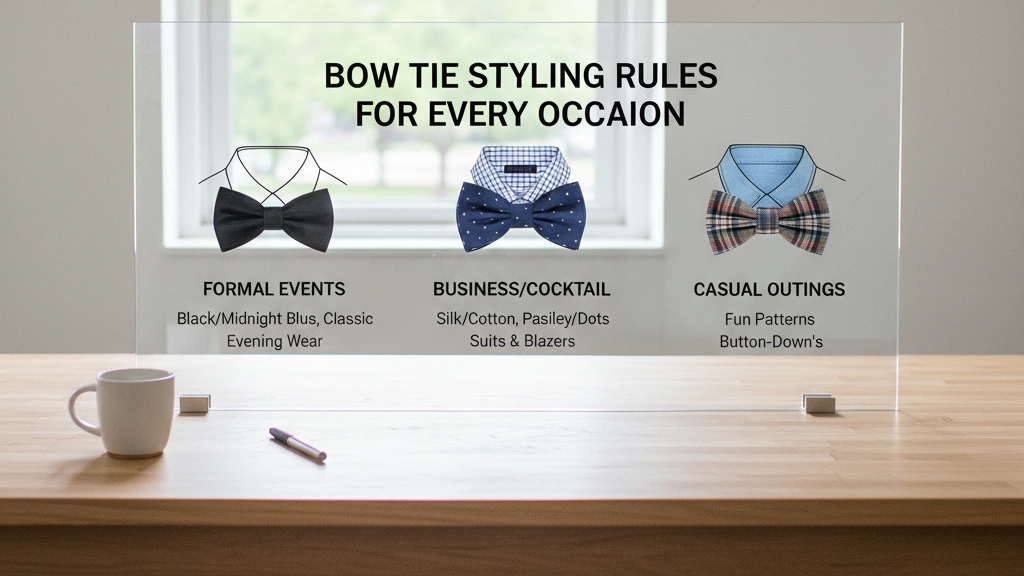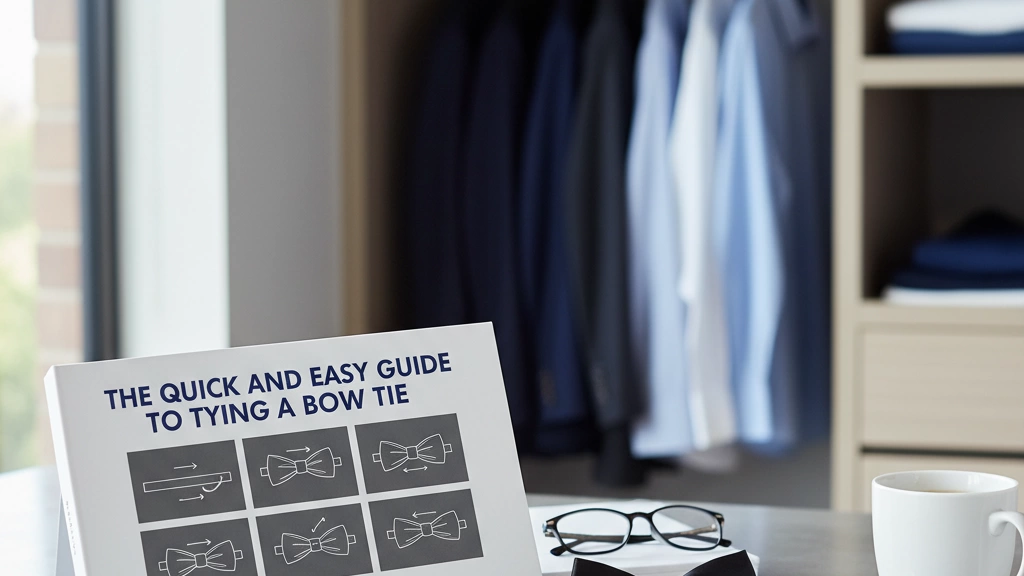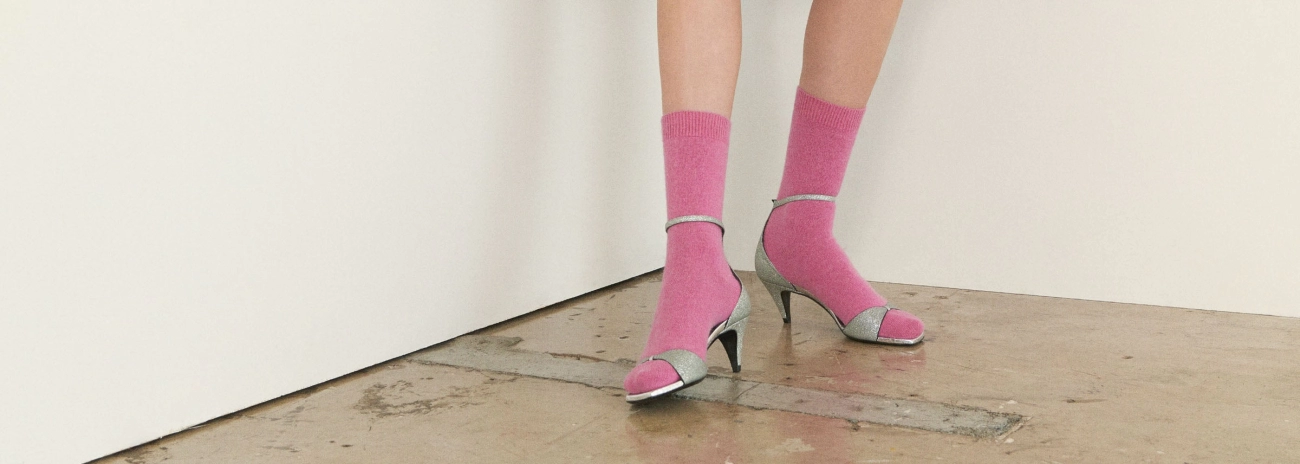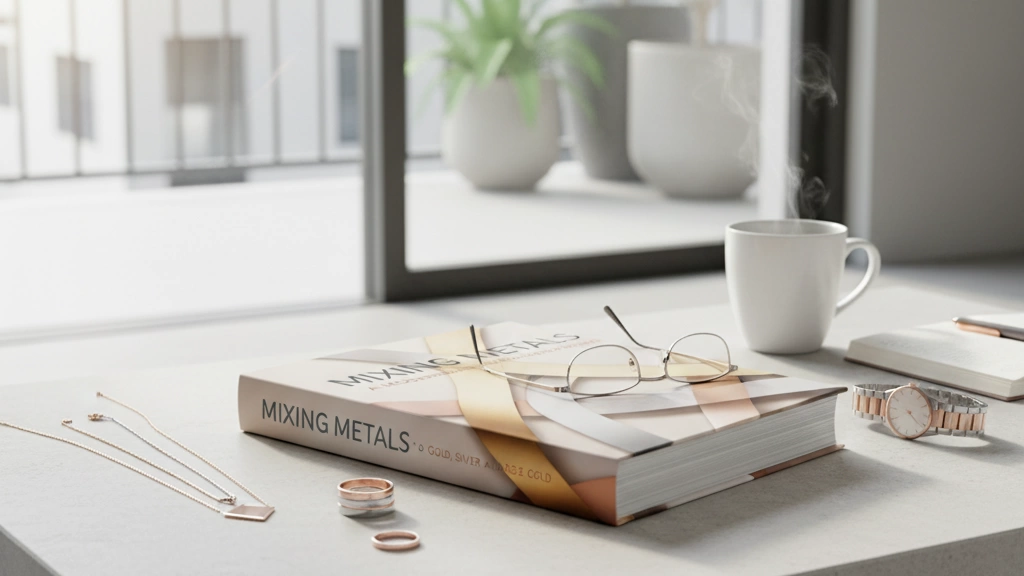Bow ties have a reputation. For some, they’re a bold style power move. For others, a risky fashion minefield that screams “trying too hard.” But here’s the truth: wearing a bow tie with confidence isn’t about luck or genetics—it’s about knowing the rules that separate style from costume. Once you master these, a bow tie becomes your secret weapon, not a gamble.
In this guide, you’ll get the unbreakable rules of wearing a bow tie with confidence—think perfect proportions, the mandatory dimple, and how to dodge cringe-worthy mistakes. No fluff, just real-world tips that’ll have you turning heads for all the right reasons. Ready to wear that bow tie like you mean it? Let’s dive in.
Foundational Rules
Rule 1: Own It or Don’t Wear It
Here’s the unspoken truth—if you’re not feeling confident in your bow tie, don’t bother wearing one. Confidence is your secret weapon. Bow ties aren’t accessories; they’re attitude statements. When you rock a bow tie, mentally commit to owning it like it’s part of your personality. Half-hearted attempts look, well, half-hearted. So, channel that inner swagger, because your mindset changes everything.
Rule 2: Always Tie It Yourself
Clip-ons are for those who gave up before they even started. Nothing says “I care” like a hand-tied bow tie. Sure, it takes practice, but tying it yourself is a rite of passage—and it shows. Also, it prevents that embarrassing moment when your clip-on pops loose at a wedding or party. Master the knot, and you’ll join the real club of bow tie wearers.
Rule 3: Perfect Proportions Matter
Your bow tie isn’t a one-size-fits-all deal. The bow tie’s width should complement your face width and your shirt collar spread—too small looks timid; too large looks like a kid’s party favor. Think of proportion as the golden rule. A slim face? Go for a narrower bow tie. Broad collar with wide spread? A bigger bow tie balances the frame. Perfect proportions keep you sharp, not clownish.
Rule 4: The Dimple Is Mandatory
The dimple in a bow tie is like the crease in a sharp tuxedo—it elevates the look from amateur hour to polished pro. It’s that tiny fold right in the center of the bow, giving it character and personality. To nail it every time: gently pinch the center of the bow as you tie, then adjust while tightening. No dimple? No deal.
Rule 5: Match the Formality of the Event
Black tie weddings? Classic black silk bow tie only. Creative black tie? Feel free to get playful—textured fabrics or subtle patterns are fair game. Daytime events? Skip the glossy formal stuff; linen or cotton bow ties in lighter colours fit better. Wearing a tuxedo but not sure about the bow tie style? Remember—next to your shoes, the bow tie sets the tone. Match the event, and you’ll never look out of place.
Outfit Coordination Rules for Wearing a Bow Tie
Rule 6: Shirt Collar Matters More Than the Tie
When it comes to bow ties, the shirt collar is your best friend—or your worst enemy. The key is choosing collars that frame the bow nicely without overpowering it. Classic spread collars, like the semi-spread or cutaway collar, work great because they offer enough space for the bow tie to sit comfortably and stay visible. Point collars can also work but make sure the points don’t clash with the bow’s edges. Avoid collars that are too stiff or tight, like button-down collars, since they squeeze the bow tie and look off.
Rule 7: Jacket Lapels and Bow Tie Width Must Harmonize
Your jacket’s lapel width should balance with the bow tie’s size. Thin bow ties look best paired with slim lapels; thicker or oversized lap ties pair nicely with wider bow ties. This harmony makes your outfit look intentional and polished. If your trousers’ or jacket’s style is modern and tailored, stick with proportional bow ties to match that clean silhouette.
Rule 8: Limit Patterns – Mixing Without Looking Clownish
Bow ties often come in patterns, but bold prints can easily clash with shirts or jackets. Here’s how to play it smart:
- If your bow tie has a busy pattern (paisley, polka dots, florals), keep the shirt solid or with minimal texture.
- When wearing patterned shirts, opt for solid or subtle bow ties.
- Avoid pairing multiple loud patterns, especially in your jacket, shirt, and bow tie all at once. Balance is key.
Rule 9: Pocket Square Rules When Wearing a Bow Tie
The pocket square is your chance to add a touch of flair—but does it have to match? Nope. You can coordinate without copying. Try a pocket square that complements the bow tie’s colors or texture without being identical. Sometimes, a crisp white pocket square works best to avoid overpowering your look. For more ideas on matching ties and pocket squares perfectly, check out this detailed guide on matching your tie and pocket square.
Rule 10: The Tuxedo-Only Myth
Bow ties no longer belong just to tuxedos. Modern styling embraces bow ties with suits and even casual odd jackets. This approach opens up bow ties for daytime business casual, creative events, and smart-casual scenarios. Pair a knit or linen bow tie with a blazer or suit for a contemporary spin that’s both stylish and approachable. Just remember to keep your shirt and jacket choices sharp, ensuring your bow tie stands out without looking out of place.
By following these outfit coordination rules, you make sure your bow tie isn’t just an afterthought—it becomes the centerpiece of your look, worn with confident, modern style.
Confidence & Body Language Rules
Rule 11: Posture, Eye Contact, and the “I Meant to Do This” Vibe
Wearing a bow tie with confidence starts long before anyone notices the actual tie. Stand tall with your shoulders back, keep your chin slightly up, and maintain an open posture. This body language tells everyone you mean business—and style. Eye contact is key, too. When you look people in the eye, you project calm confidence, making the bow tie look like a natural part of your outfit, not just an accessory you tossed on.
The best way to wear a bow tie confidently? Own it like you planned it from the get-go. Even if you’re still warming up to the look, act like the bow tie is your signature move. This “I meant to do this” vibe is what turns heads for the right reasons.
Rule 12: How to Handle Comments and Questions Gracefully
Bow ties can spark conversations. Whether it’s a compliment or a casual “Why the bow tie?”, respond with ease. Keep answers light and positive—something like, “It’s a style I enjoy, and it’s a great way to stand out.” This approach shows you’re comfortable, which only adds to your confidence.
If someone asks about tying it, use it as a chance to share quick tips or direct them to a good self-tie bow tie tutorial. Showing you\’re knowledgeable without sounding defensive always leaves a great impression.
Mastering these confidence and body language rules will have you rocking your bow tie effortlessly in any setting. For more on keeping your accessories sharp, check out our tips on how to clean your fashion jewelry and make it last longer, since confidence includes wearing well-kept items.
Occasion-Specific Bow Tie Playbook

Knowing when and how to wear your bow tie makes all the difference. Here’s a quick guide to match bow tie style with the occasion:
Black-Tie & White-Tie Events
Stick to the classics here. A black silk bow tie is a must for black-tie events, perfectly paired with a tuxedo. For white-tie, go for the traditional white bow tie with a tailcoat. These are high-formality occasions where traditional bow tie etiquette rules apply fully—no patterns, no flashy colors.
Weddings: Guest vs Groom vs Daytime
Guest: Choose a subtle bow tie that complements your suit and wedding colors. Avoid anything too flashy or casual.
Groom: This is your chance to shine. Often you’ll see tuxedo black or navy blue, sometimes with a creative black tie twist—think deep wine or unique textures.
Daytime: Linen or cotton bow ties in soft colors or gentle patterns work well for outdoor or daytime weddings, keeping the look fresh but polished.
Creative & Business Casual Settings
Bow ties don’t have to be reserved for formal events. In creative or business casual settings, feel free to experiment with textured knit bow ties or patterned designs paired with well-fitted suits or sport coats. Just remember to keep patterns balanced and collars in check.
Date Nights and Parties
Here you can afford a bit more style freedom. A bold patterned bow tie or novelty fabric like velvet can add personality while still looking sharp. Confidence carries the look here—own your bow tie choice.
Summer & Warm-Weather Bow Ties
For hot months, opt for breathable fabrics like linen, seersucker, or lightweight cotton. These materials keep you cool and stylish. Light colors and soft pastels also work perfectly for summer events, offering a relaxed yet refined vibe.
Mastering these occasion-specific rules helps you wear your bow tie with the confidence it deserves—whether you’re stepping into a black-tie gala or a casual summer party.
For more on pairing accessories with your outfit, check out this detailed guide on transitioning your jewelry look from day to night.
Common Mistakes and How to Avoid Them
Wearing a bow tie confidently is tricky—one small slip can turn a stylish look into a fashion fail. Here are the top 8 bow tie mistakes real men make, plus a quick-fix checklist before you head out.
Top 8 Bow Tie Fails
Wearing Clip-Ons in Public
Clip-ons scream “last minute” and rob you of that authentic style edge. Always opt for self-tied for real confidence.
Wrong Bow Tie Size
Too big or too small ruins the balance. Make sure your bow tie matches your face width and collar spread.
Ignoring the Dimple
No dimple means no character. Without it, your bow tie looks flat and lifeless.
Mismatched Formality
Wearing a flashy bow tie to a black-tie event or a tuxedo-only style during the day stands out, but not in a good way.
Ignoring Shirt Collar Types
Some collars just don’t play nice with bow ties. Stay away from heavy spread collars that eat the bow’s space.
Clashing Patterns
Going wild with patterns usually backfires. Keep patterns minimal or balanced to avoid a clownish look.
Overdoing Accessories
Too many accessories steal attention. If you’re rocking a bold bow tie, tone down pockets squares or suspenders.
Poor Posture and Nerves
A bad posture or awkward stare ruins the “I meant to do this” vibe. Confidence is your best accessory.
Quick-Fix Checklist Before Leaving
- Is the bow tie perfectly tied with a clear dimple?
- Does the bow size fit your face and collar?
- Are your shirt collar and jacket lapels working with your bow tie?
- Is your outfit matching the event’s formality?
- Have you limited patterns and accessories for balance?
- Are you standing straight with relaxed shoulders?
Nailing these basics stops common bow tie mistakes and turns heads for the right reasons.
For a simple guide on perfect knots and tying techniques, check out this step-by-step self-tie bow tie tutorial to sharpen your skills every time.
Shopping & Care Guide for Bow Ties
Best Bow Tie Fabrics for Each Season
Choosing the right fabric keeps your bow tie looking sharp and comfortable all day. For warmer months, go with breathable, lightweight fabrics like linen, cotton, or seersucker. These materials handle heat well and add a casual, relaxed vibe perfect for summer events or outdoor gatherings. When it’s cooler, opt for silk, wool, or knit bow ties—they provide texture and warmth while keeping your look polished.
Self-Tie vs Pre-Tied Bow Ties: Final Verdict
If you want to wear your bow tie with confidence, self-tie is the way to go. Tying your own bow tie shows effort and style, and it always looks sharper than clip-ons or pre-tied versions. Plus, mastering the dimple and knot adds a personal touch that elevates your entire outfit. That said, pre-tied bow ties can be handy for quick dressing or when convenience trumps style—but avoid using clip-ons in public to keep up proper bow tie etiquette.
Budget, Mid-Range, and Luxury Brands Worth Owning
Start with budget-friendly options to practice tying and figure out your preferences. Mid-range brands offer higher-quality fabrics and better craftsmanship, great for daily wear or business casual looks. If you want to invest, luxury brands excel in premium silk and unique designs that will last for years. Whichever level you choose, prioritize fit and fabric to ensure your bow tie complements your style effortlessly.
How to Store and Clean Bow Ties Properly
Proper care extends the life of your bow ties. Always store them flat or hung by the neck to avoid wrinkles and maintain shape. Avoid stuffing them in pockets or drawers where they can get crushed. For cleaning, spot clean silk ties gently with a damp cloth, and for cotton or wool, use a mild detergent or professional dry cleaning. Remember, frequent washing can wear out the fabric, so clean only when necessary. For more detailed care tips, check our guide on storing jewelry and accessories for insights on keeping delicate items pristine and lasting longer.


